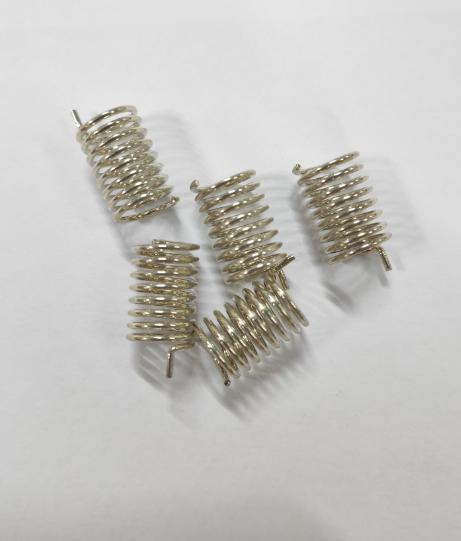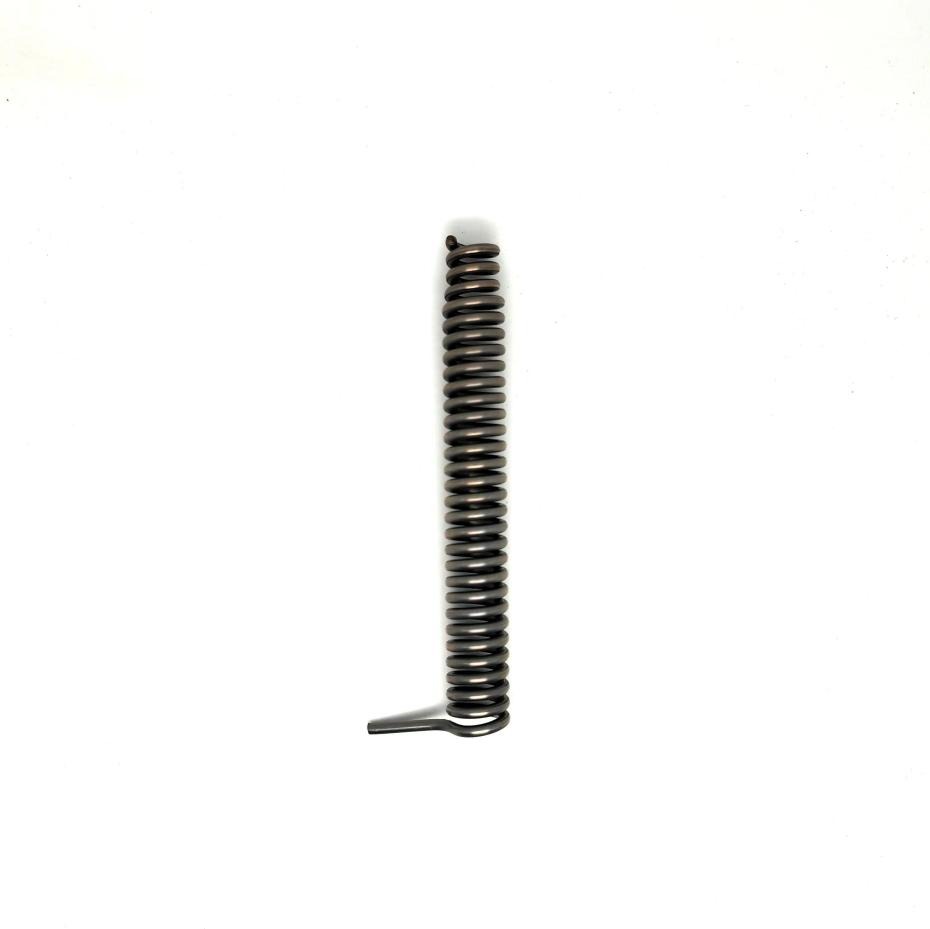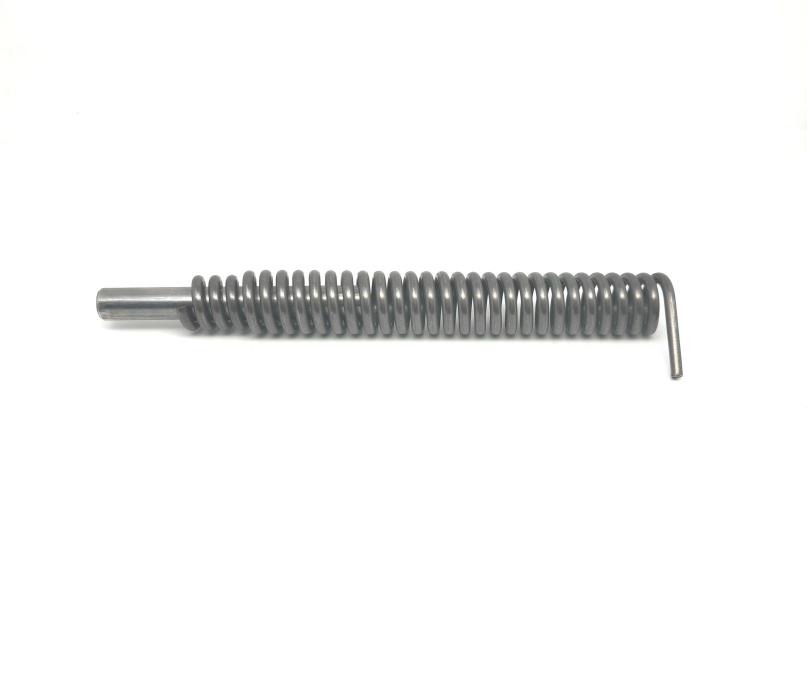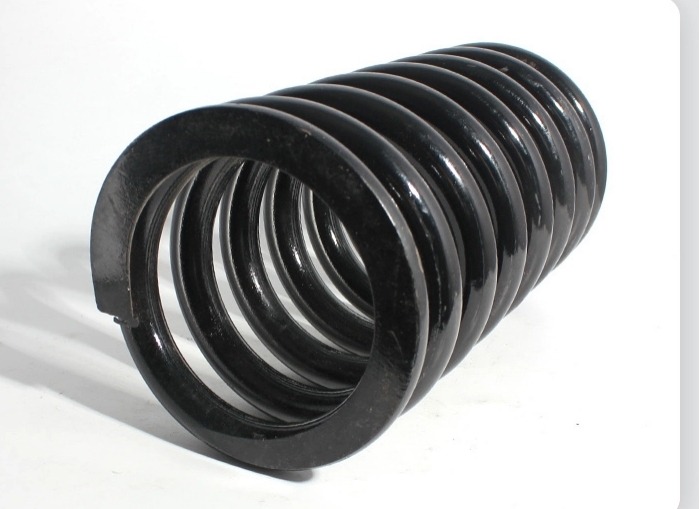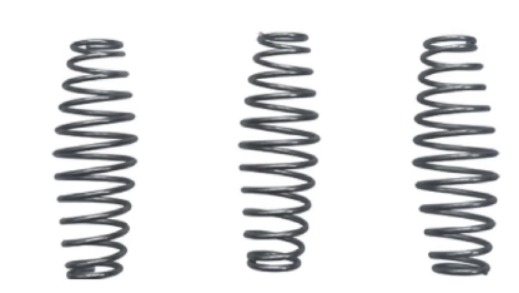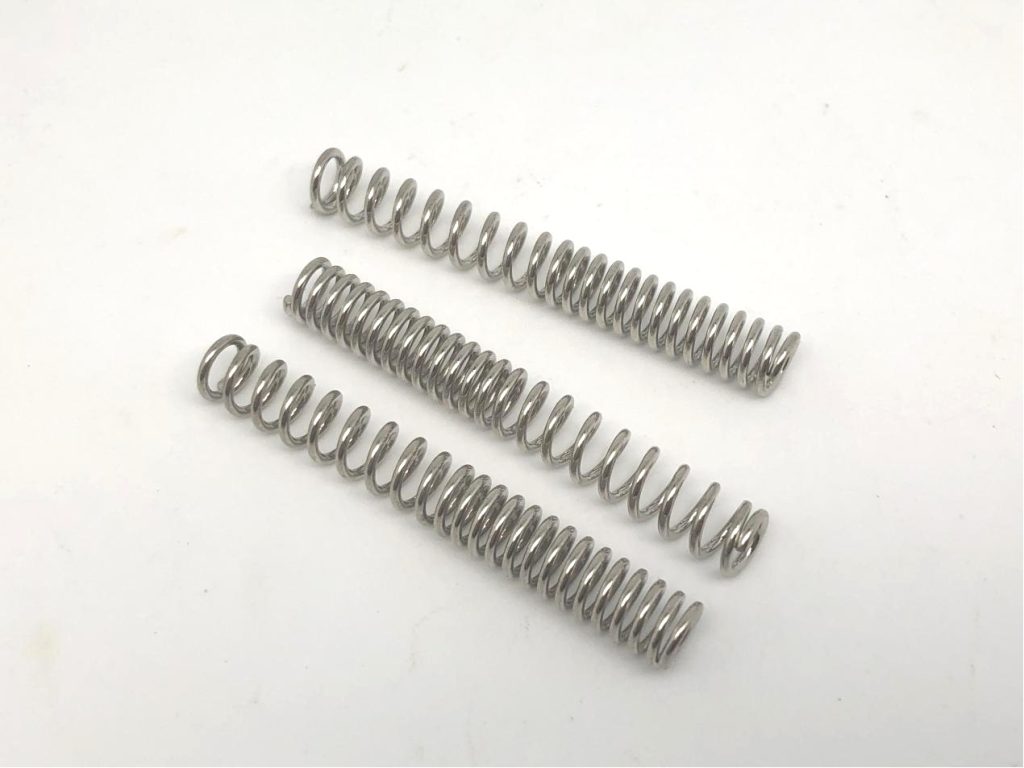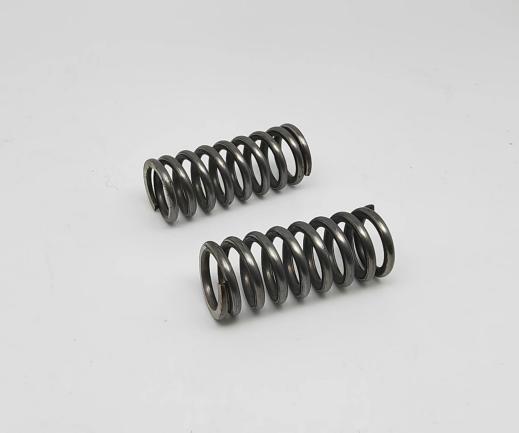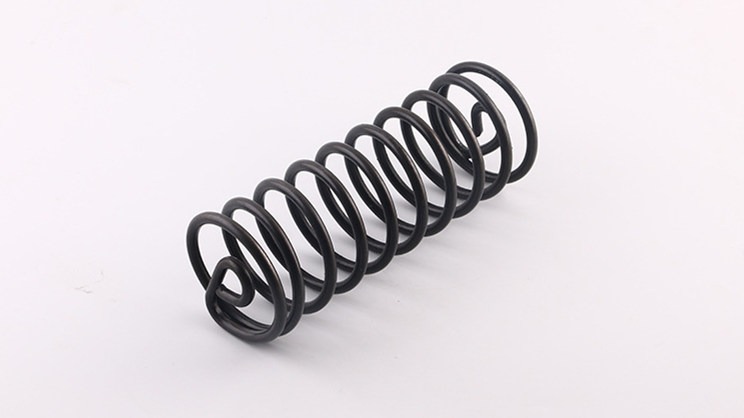4 Common Compression Spring Material Characteristics Analysis
Table of Contents
Compression springs are fundamental components in a wide range of mechanical and industrial applications, serving critical roles in energy storage, motion control, and force mitigation. The performance and longevity of these springs are heavily dependent on the material from which they are fabricated. Understanding the properties of different materials is crucial for selecting the most suitable option for specific applications. This article delves into the material characteristics of four primary types of materials used in compression springs: steel, alloy materials, polymeric materials, and titanium alloys.
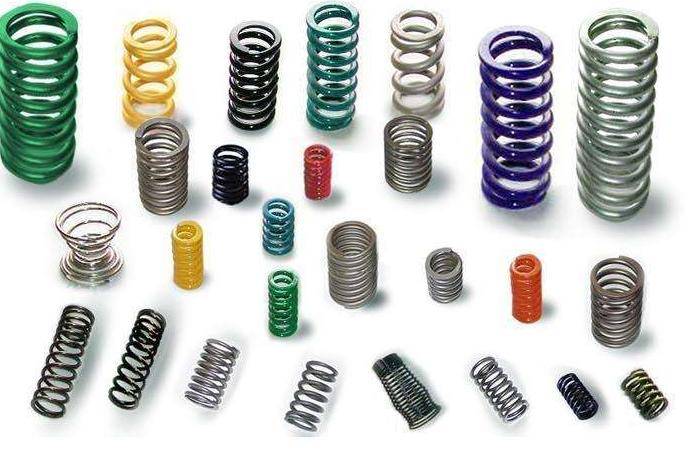
1. Elastic Modulus: Material Stiffness for Compression Springs
The elastic modulus, often referred to as Young’s modulus, is a measure of a material’s stiffness. It indicates the material’s ability to resist deformation under stress. A higher elastic modulus means the material will deform less under a given load, making it suitable for applications requiring high stiffness.
| Material | Elastic Modulus | Characteristics |
| Steel | 200-210 GPa | Steel offers high rigidity due to its significant elastic modulus, making it a traditional and reliable choice for compression springs. Its high rigidity ensures that the spring maintains its shape and resists deformation under load. |
| Alloy Materials | Similar to steel, varies by alloy | Alloys such as stainless steel and nickel alloys have elastic moduli comparable to steel. However, the modulus can be tailored by adjusting alloying elements, which allows for customization to fit more complex or specialized applications. |
| Polymer Materials | 0.1-10 GPa | Polymers like polyurethane and nylon have a much lower elastic modulus compared to metals. This lower modulus makes them suitable for applications where a lower stiffness is acceptable, providing flexibility and impact resistance. |
| Titanium Alloys | ~110 GPa | Titanium alloys fall between steel and polymers in terms of elastic modulus. This intermediate value provides a balance of rigidity and flexibility, making titanium alloys ideal for applications where both lightweight and high elasticity are desired. |
2. Tensile Strength: Material Durability under Tension
Tensile strength is a crucial metric that indicates the maximum stress a material can withstand before it breaks. High tensile strength is essential for compression springs to ensure they can handle the stresses imposed on them during operation without failure.
| Material | Tensile Strength | Characteristics |
| Steel | 500-2000 MPa | Steel exhibits high tensile strength, which allows it to withstand significant loads and stresses. This makes it suitable for applications where durability and strength are crucial, such as in high-stress environments. |
| Alloy Materials | Enhanced by heat treatment | Alloy materials can achieve tensile strengths that surpass those of steel through processes such as heat treatment and alloying. This enhanced strength makes alloys suitable for extreme applications where superior performance is required. |
| Polymer Materials | 20-100 MPa | Polymers generally have lower tensile strength compared to metals. Despite this, they offer good elastic recovery, making them suitable for applications that require long-term performance under lower stress conditions. |
| Titanium Alloys | 800-1300 MPa | Titanium alloys combine high tensile strength with a lightweight nature, making them ideal for applications where both strength and weight are critical. They also offer excellent performance in corrosive environments. |
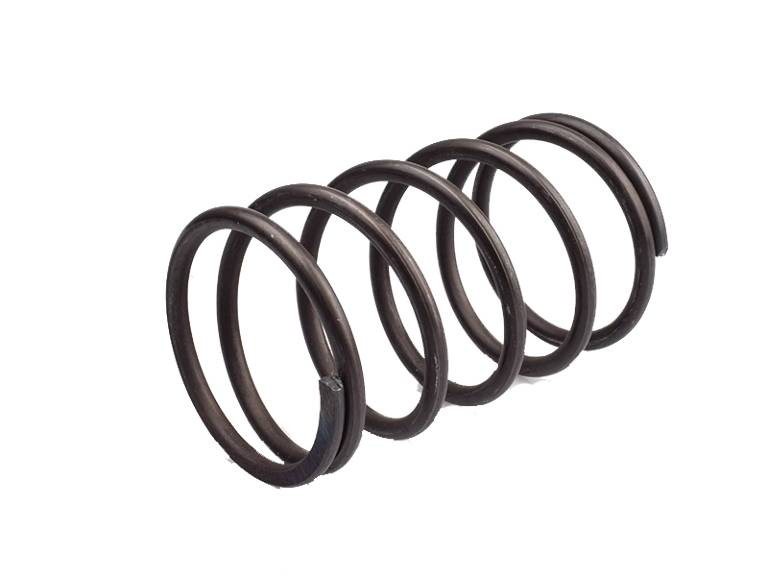
3. Corrosion Resistance: Material Durability in Harsh Environments
Corrosion resistance is a critical property for materials used in compression springs, especially in applications where exposure to moisture, chemicals, or extreme temperatures can degrade the material’s integrity.
| Material | Corrosion Resistance | Characteristics |
| Steel | Poor; prone to rust | Conventional steel is susceptible to rust and corrosion, particularly in moist or aggressive environments. To mitigate this, steel components often require surface treatments, or alternatives like stainless steel are used. |
| Alloy Materials | Good | Alloys such as stainless steel and nickel alloys offer superior corrosion resistance compared to standard steel. Their enhanced resistance is achieved through the addition of elements like chromium and nickel, making them suitable for harsher environments. |
| Polymer Materials | Excellent | Polymers inherently possess excellent corrosion resistance. They can withstand exposure to a wide range of chemicals and environmental conditions without degradation, making them ideal for chemically aggressive environments. |
| Titanium Alloys | Excellent | Titanium alloys exhibit exceptional corrosion resistance, even in highly corrosive environments such as strong acids or bases. This property is a key reason for their use in demanding applications where durability is essential. |
4. Fatigue Strength: Material Durability under Repeated Stress
Fatigue strength refers to a material’s ability to withstand repeated cycles of stress without failure. For compression springs, this property is crucial as they are often subjected to continuous loading and unloading.
| Material | Fatigue Strength | Characteristics |
| Steel | High | Steel’s high fatigue strength allows it to endure repeated loading cycles without failing. However, under prolonged high-stress conditions, steel compression springs may experience fatigue fractures over time. |
| Alloy Materials | High, with improvements | Alloys can achieve high fatigue strength, often surpassing that of steel, through optimized alloy composition and advanced heat treatment processes. This makes them suitable for applications where extended durability under cyclic loading is required. |
| Polymer Materials | Lower, but good recovery | Polymers generally have lower fatigue strength compared to metals. Nevertheless, their excellent elastic recovery contributes to longer service life in applications involving low-stress cycles. |
| Titanium Alloys | High | Titanium alloys offer high fatigue strength, particularly under dynamic loading conditions. Their combination of strength and lightweight properties makes them ideal for high-performance applications where fatigue resistance is crucial. |
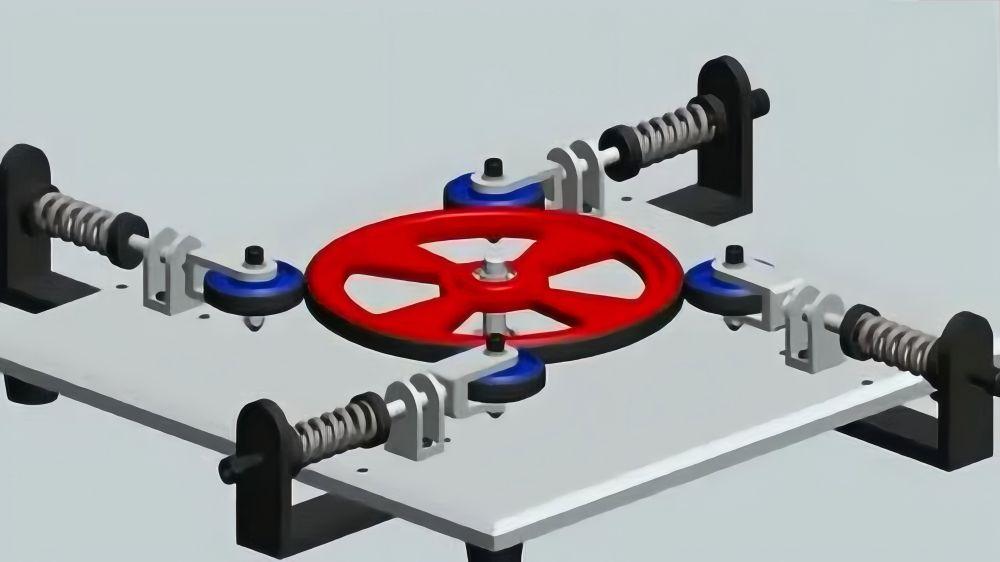
In conclusion, the properties of steels, alloy materials, polymeric materials, and titanium alloys offer a broad spectrum of options for compression spring design. Each material has its unique advantages, making it suitable for specific applications.
- Steel offers high elastic modulus and tensile strength but has limitations in fatigue strength and corrosion resistance.
- Alloys provide a range of properties with high tensile strength, excellent corrosion resistance, and superior fatigue strength.
- Polymers excel in corrosion resistance and fatigue strength but generally have lower tensile strength and elastic modulus.
- Titanium alloys combine high elastic modulus, tensile strength, and corrosion resistance with excellent fatigue strength, making them suitable for demanding applications.

